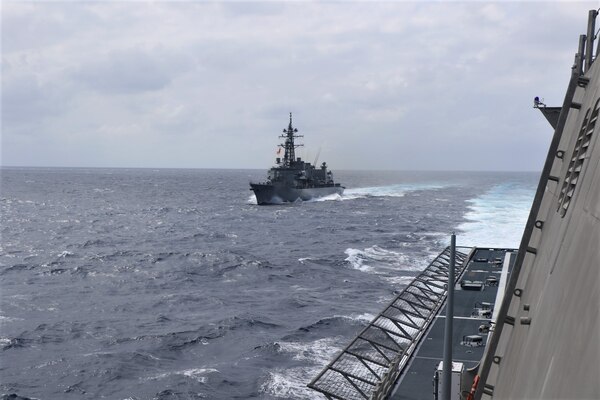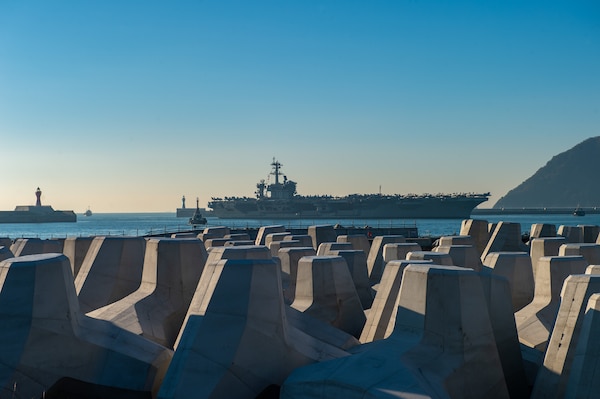“As maritime security threats including attempts to change the status quo by force are increasing, cooperation among navies is critical to the stability of the Indo-Pacific region and the peace and security of the world,’’
___________________________________________________________________________________
___________________________________________________________________________________
Introduction
But as with the kinetic war in Ukraine, the conflict did not begin one evening last February. It was first launched by Russia in response to Ukraine’s pro-Western, anti-corruption Maidan Revolution that raged through the winter of 2013–2014, ultimately resulting in the ouster of Viktor Yanukovych after he sought to capitulate to the Kremlin and refuse protesters’ and the wider Ukrainian public’s demands for continuing the country’s pro-European and pro-Western agenda. Russia was the first power to use sanctions and trade restrictions in the conflict, namely against Ukraine in 2013.[1] Russia also first sought to use Ukraine’s future to bring the international economic order into the scope of its fight even before Yanukovych’s ouster.[2] However, economic and technology restrictions on Russia have been at the core of the wider West’s strategy of support for Ukraine throughout that period. The target of these tools has changed significantly, initially aimed at deterring Russia from further aggression after 2014 to seeking to restrict its state capacity and ability to wage the war since 2022. But their global impact and Putin’s attempts to undermine the international order through his own weaponization of Russia’s economy and its commodities base have left the world in a new era of international economic competition, and other powers, great and small, are being impacted in ways unforeseen. States are, in turn, also learning lessons from this new era of economic warfare for the future, and the risks they might face from such conflict.
This paper examines the impact on one often overlooked but deeply affected country, the Republic of Korea (or South Korea). Seoul has a unique position in the economic war in that it was arguably the largest Western ally that did not join the sanctions regime against Russia after Putin’s annexation of Crimea and fomenting conflict in eastern Ukraine in 2014. In fact, as we will see, a number of crucial economic ties between Russia and South Korea grew significantly thereafter; although this was also the case for a number of countries that induced sanctions—Germany’s gas linkages with Russia in the Nord Stream 2 pipeline are perhaps the best known example. This paper will examine Seoul’s strategic considerations in doing so, and the reasons that the West did not put substantial pressure on South Korea to join the sanctions regime at the time. Seoul did, however, join the sanctions regime fully in 2022. The domestic political considerations in South Korea played a key role in that shift and will also determine how the policy’s effectiveness is judged and, in turn, how South Korea may be positioned for future similar economic conflict between the West and China.
The Economic War with Russia
___________________________________________________________________________________
Japan, Republic of Korea, U.S. Navies Conduct Trilateral Maritime Exercise
The U.S. Navy’s Carrier Strike Group (CSG) 1 conducted a trilateral maritime exercise with the Japan Maritime Self-Defense Force (JMSDF) and Republic of Korea Navy (ROKN), Nov. 26.
U.S. Navy Destroyer Conducts Freedom of Navigation Operation in the South China Sea
On November 25, USS Hopper (DDG 70) asserted navigational rights and freedoms in the South China Sea near the Paracel Islands, consistent with international law. At the conclusion of the operation, USS Hopper (DDG 70) exited the excessive claim area and continued operations in the South China Sea. This freedom of navigation operation ("FONOP") upheld the rights, freedoms, and lawful uses of the sea recognized in international law by challenging restrictions on innocent passage imposed by the People's Republic of China (PRC), Taiwan, and Vietnam.
U.S. 7th Fleet and Armed Forces of the Philippines Begin Maritime Cooperative Activity
U.S.7th Fleet (C7F) and Armed Forces of the Philippine (AFP) units began a Maritime Cooperative Activity (MCA) in the South China Sea, Nov. 23.
Carl Vinson Carrier Strike Group Arrives in Busan, Republic of Korea
USS Carl Vinson (CVN 70), the flagship of Carrier Strike Group (CSG) 1, arrived in the Republic of Korea (ROK) for a scheduled port visit, Nov. 21.

Japan, U.S. Navies Conduct Bilateral Maritime Exercise
The U.S. Navy conducted a maritime exercise with the Japan Maritime Self-Defense Force (JMSDF) in the South China Sea demonstrating the combined capabilities to counter regional_







No comments:
Post a Comment